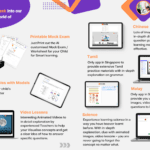Teaching math to primary 1 students can be a challenging task, especially if you are not familiar with the curriculum and the best teaching methods. However, with the right approach and techniques, you can make math fun and engaging for young learners. In this guide, we will share some tips and strategies on how to teach primary 1 math effectively.

Understanding the Primary 1 Math Curriculum
Before you start teaching math to primary 1 students, it’s essential to have a clear understanding of the curriculum. The primary 1 math curriculum covers the following topics:
- Numbers up to 100
- Addition and subtraction within 20
- Multiplication and division concepts
- Money and time
- Measurement and geometry
To teach primary 1 math effectively, you need to ensure that you cover all these topics thoroughly. You should also be familiar with the learning outcomes and objectives for each topic.
Tips for Teaching Primary 1 Math
- Use Visual Aids: Primary 1 students are visual learners, and they learn best through hands-on experiences and visual aids. Therefore, you should use visual aids such as number charts, ten frames, and manipulatives to teach math concepts. Visual aids help students to understand abstract concepts, such as addition and subtraction, and make learning more fun and engaging.
- Make Math Relevant: To make math more interesting for primary 1 students, you need to make it relevant to their daily lives. For example, you can use real-life situations, such as counting money or measuring objects, to teach math concepts. This approach helps students to see the practical applications of math and encourages them to engage in learning.
- Use Games and Activities: Games and activities are a great way to make math more fun and engaging for primary 1 students. You can use games such as number bingo, matching games, and math puzzles to reinforce math concepts. Activities such as measuring objects, counting coins, and creating patterns also help to make math more hands-on and interactive.
- Provide Feedback: Feedback is an essential part of the learning process, and it helps students to understand their strengths and weaknesses. As a teacher or parent, you should provide feedback on students’ work and progress regularly. Positive feedback reinforces good performance, while constructive feedback helps students to improve their understanding of math concepts.
- Encourage Critical Thinking: Math is not just about memorization; it also involves critical thinking and problem-solving skills. To help primary 1 students develop these skills, you should encourage them to think critically and solve problems independently. You can use open-ended questions and challenging problems to stimulate their thinking and encourage them to explore different solutions.
Conclusion
Teaching primary 1 math can be a rewarding experience if you use the right approach and techniques. By understanding the curriculum, using visual aids, making math relevant, using games and activities, providing feedback, and encouraging critical thinking, you can help primary 1 students to develop a strong foundation in math. With your guidance and support, they can become confident and competent math learners.












